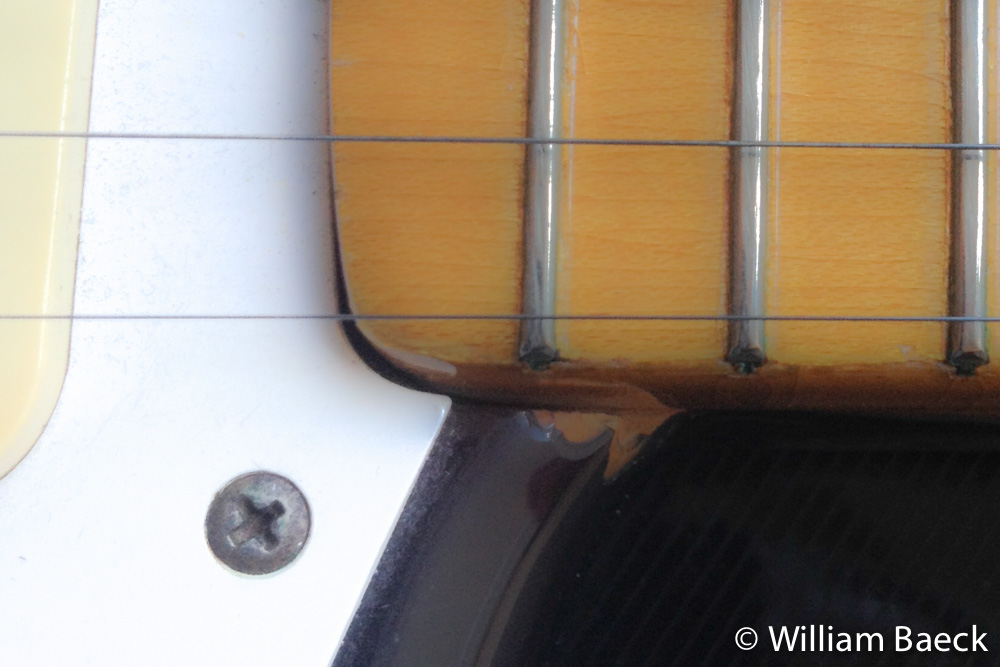The GAS Man: (Don't) Mind the Gap

I'm always fascinated by what guitarists obsess about.
Of course, if I wasn't I wouldn't have much to write about.
Given human (or at least guitarist) nature, these obsessions generally turn into debates, which mostly seem to fall into three categories:
- Things that can be tested to be true or false.
- Things that are matters of taste.
- Things that can be shown to be true or false by simply thinking about them hard enough.
For instance, it’s easy to test whether a 12-watt amp with an efficient speaker can be louder than a 20-watt amp with an inefficient one. Simply plug in both amps with their respective speakers, plug in your guitar, bang a chord and measure the results with an SPL (sound pressure level) meter. Debate over. The bantamweight wins.
Other arguments come down to matters of taste and individual perception. A classic fight is whether a Les Paul or Stratocaster is better. I think we all know the answer to that one.
But some of my favorite areas of obsession are those that don't require any equipment to prove who’s right, but can be settled just by thinking.
Today's thought experiment involves a literal sticking point for Fender players—the neck pocket gap.
Get The Pick Newsletter
All the latest guitar news, interviews, lessons, reviews, deals and more, direct to your inbox!
This is the slight gap that usually shows between the neck pocket and a bolt-on neck. People mostly comment on the side gaps—probably for the simple reason that any gap at the end of the neck pocket is usually covered by the pickguard. Few notice if there’s a gap at the end. Out of sight, out of obsession.
Folks who have an opinion on this topic generally want a tight fit between the neck and the sides of the pocket. The reasoning typically goes like this, which I lifted verbatim from a guitar discussion group:
“Loose neck pockets don’t allow the neck and body to couple as well. This can diminish sustain and low freqs. Filling the gap or gaps so [the] neck fits tightly in the neck pocket is the only fix.”
It's one of those things that sounds like a good idea until you think about it a little more deeply. On a bolt-neck guitar the main area of contact is along the back of the neck, where the screws that go through the body pull the neck tight against the base of the neck pocket. If the neck also touches the sides of the neck pocket, there’s an even tighter and more complete coupling. Fine as far as it goes.
But here's where guitarists, luthiery and physics part company. Most makers allow for a bit of space along the sides of the neck pocket. That’s because unless the guitar is designed for it, if the fit along the sides of the neck pocket is tight, the neck can pull off chucks of body paint, make the neck difficult to remove, and even crack the side of the pocket as the wooden neck and body swell and contract with seasonal changes.
Many players shift the debate at this point. They say they don't want the neck actually touching the sides of the pocket. Instead what they want is a gap, but the smallest one possible, as if the smaller the gap, the more coupled it is.
The most often cited bit of Internet wisdom is that the gap should be wide enough for a slip of paper to fit, but not a credit card or—God forbid—a guitar pick.
But here's the thing, if there is any gap, that part of the neck is no longer coupled. If air can fit through the gap, it doesn't terribly matter whether it's a 1/1000-inch gap or a 1/8-inch gap as far as the effect on energy transfer is concerned is concerned. Unlike a speaker that is moving so much air that it can make your living room walls vibrate from the force of the air pushing against them, the vibrations of a neck or solid body guitar are miniscule. It takes contact to transfer any noticeable string vibration.
If that isn't obvious, here's another way to think of it. Take a tuning fork—they still make those, don't they? Touch it to the top of an acoustic guitar and hear that 440 A ring out loud. Now tap that tuning fork again, only this time hold it as close to the top of your guitar as possible but without touching the top. No matter how close you get, unless you actually touch it to the top, the tuning fork isn't coupled to the guitar and no noticeable energy is transferred.
The upshot is, don't mind the gap. It's not necessarily a good thing for the neck to be fitted so tightly that it touches the sides of the pocket. And once there’s any gap, the amount is mainly an aesthetic choice, not an audible one.
But if after all this, you still want your guitar neck to be mechanically coupled to the sides of the neck pocket you can devise a simple test to see if it provides any sonic merits: just take a tiny wooden shim and slide it into the gap. Does the guitar sound better? If so, leave it in. If not, take it out.
Otherwise, just play your guitar.
William Baeck is a writer, photographer and hack guitarist living in London. You can check out his webpage at williambaeck.com and reach him on Facebook and Twitter.
"Upgrading from your entry-level acoustic opens the door to an entirely new world of tonewoods, body shapes, and brands": 6 signs it's time to upgrade from your first acoustic guitar
"I'm past my prime": 5 common excuses for not learning the guitar – and 5 body and mind-boosting reasons you should









